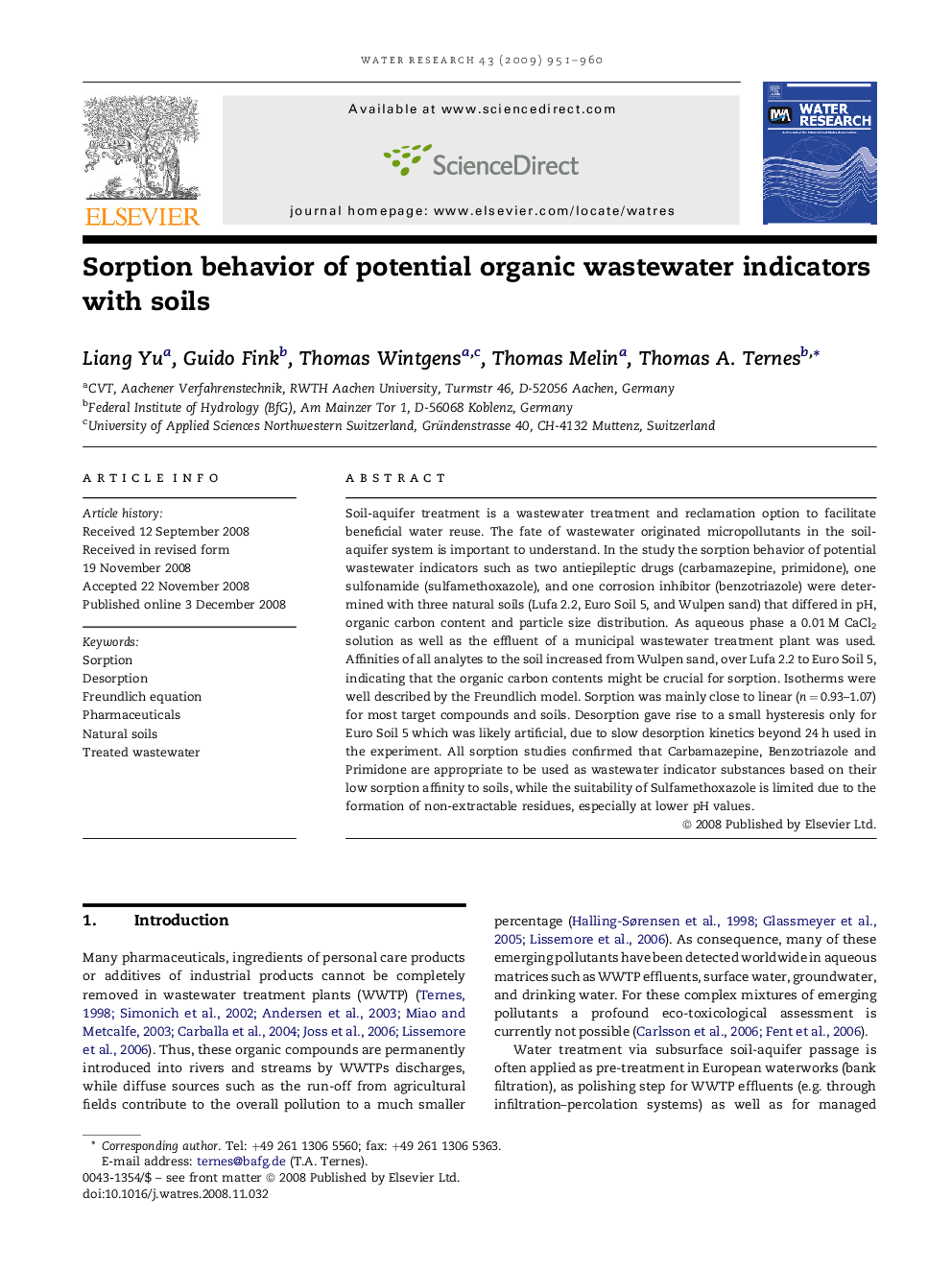| کد مقاله | کد نشریه | سال انتشار | مقاله انگلیسی | نسخه تمام متن |
|---|---|---|---|---|
| 4484373 | 1316918 | 2009 | 10 صفحه PDF | دانلود رایگان |

Soil-aquifer treatment is a wastewater treatment and reclamation option to facilitate beneficial water reuse. The fate of wastewater originated micropollutants in the soil-aquifer system is important to understand. In the study the sorption behavior of potential wastewater indicators such as two antiepileptic drugs (carbamazepine, primidone), one sulfonamide (sulfamethoxazole), and one corrosion inhibitor (benzotriazole) were determined with three natural soils (Lufa 2.2, Euro Soil 5, and Wulpen sand) that differed in pH, organic carbon content and particle size distribution. As aqueous phase a 0.01 M CaCl2 solution as well as the effluent of a municipal wastewater treatment plant was used. Affinities of all analytes to the soil increased from Wulpen sand, over Lufa 2.2 to Euro Soil 5, indicating that the organic carbon contents might be crucial for sorption. Isotherms were well described by the Freundlich model. Sorption was mainly close to linear (n = 0.93–1.07) for most target compounds and soils. Desorption gave rise to a small hysteresis only for Euro Soil 5 which was likely artificial, due to slow desorption kinetics beyond 24 h used in the experiment. All sorption studies confirmed that Carbamazepine, Benzotriazole and Primidone are appropriate to be used as wastewater indicator substances based on their low sorption affinity to soils, while the suitability of Sulfamethoxazole is limited due to the formation of non-extractable residues, especially at lower pH values.
Journal: Water Research - Volume 43, Issue 4, March 2009, Pages 951–960